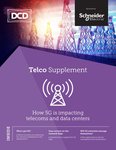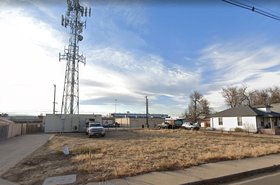Faster fifth generation (5G) mobile networks offering download speeds of up to 1Gbps are currently being rolled out in almost every continent. Yet the pace and scale of progress varies considerably from one country to another while different mobile network operators (MNOs) are relying on different standards and wireless frequency allocations.
Figures published by network test, monitoring and assurance specialist Viavi estimated that as of January 2020 commercial 5G networks had been deployed in 378 cities across 34 countries. Elsewhere the GSM Association (GSMA) estimates that 5G networks will rapidly expand over the next five years to account for as many as 1.2bn connections by 2025, covering up to a third of the world’s population.
Different 5G standards
Rather than being defined by a single common approach, 5G encompasses a broad set of different technologies and standards included in the ITU-R M.2083 framework set out by the International Telecommunications Union (ITU) and the third generation partnership project (3GPP). The 3GPP has identified three core capabilities which no 5G network can be without – namely eMBB (enhanced mobile broadband), ultra reliable low latency communications (URLLC) and massive machine type communications (mMTC).
As with its 3G/4G predecessors, 5G will not be switched on overnight. Rather it will arrive in a series of waves likely to gain download speed and capacity as use case, penetration, and coverage accelerate. What you get in terms of bandwidth, latency, and availability will depend on which portion of the frequency spectrum 5G networks use: low-band, mid-band, or high-band.
Low-band 5G networks use the 600/800/900MHz frequencies which allow broader geographical coverage because they are less susceptible to interference from static objects like walls and ceilings or atmospheric conditions. A single tower can cover hundreds of square miles and low band networks can offer connection speeds of anything between 30Mbps and 250Mbps according to recent tests, depending on the user’s proximity to the base station.
Most operators plan to use low-band spectrum as a way to connect large numbers of 5G subscribers in less densely populated areas with the minimum amount of mobile bandwidth (in some cases not much more than 4G offers now) while faster speeds will be provided by other frequencies in cities and urban conurbations.
For example, mid-band, or 5G New Radio (NR) Sub-6 could deliver average download speeds between 200Mbps and 900Mbps using frequencies under 6GHz - most commonly 2.5GHz, 3.5GHz, and 3.7-4.2GHz. Governments around the world are also mooting other wavebands within the Sub-6 spectrum which are currently have uses that will disappear eventually, such as analog TV broadcasting.
High band or millimeter wave (mmWave) 5G networks require a large number of small, low range nodes to deliver dense coverage that can support huge volumes of connected devices concurrently over shorter distances – ideal for cities, transport hubs, and other congested sites. High band frequencies operate in the 24GHz-40GHz wavebands and are expected to eventually deliver average download speeds of 1-3Gbps though manufacturers like Samsung have successfully demonstrated 5G high band connections up to 7.5Gbps.
Both mid and high band 5G infrastructure are defined as 5G New Radio (NR) by the 3GPP, meaning they can operate as non stand alone (NSA) infrastructure that additionally uses existing 4G networks to carry signals through dynamic spectrum sharing (DSS) to increase coverage in the early stages of 5G evolution.
Those networks are eventually expected to graduate into stand alone (SA) 5G infrastructure that operates independently of other cellular technologies and relies exclusively on 5G packet core architecture which uses 5G cells for both signaling and data transfer. Some carriers (AT&T for example with its 5GE infrastructure) are also deploying an interim 5G technology that uses 4G transmission technology upgraded with MIMO support and fiber optic backhaul.
South Korea and China well ahead
Countries which have fostered faster implementations of 5G have invariably been supported by government initiatives intent on accelerating the respective mobile economies.
South Korea led the way with 85 5G connected cities, following early implementations in April 2019, for example. Progress was boosted significantly by government investment of up to US$26bn designed to deliver a fully-fledged 5G environment by 2022. The country’s Ministry of Science and ICT raised US$3.3bn from spectrum auctions in the summer of 2018, with operators including LG Uplus (a subsidiary of electronics giant LG), Korea Telecom and SK Telecom buying six different frequency allocations within both mid-band 3.4-3.7GHz and mmWave 26-29GHz wavebands between them.
Tests conducted in August this year calculated the average 5G download speeds exceeded 650Mbps in Seoul and six other major cities in the county, around four times faster than similar tests conducted on 4G networks a year before. For the moment, 5G infrastructure uses NSA networks that use the 3.5GHz spectrum, with mmWave versions planned for later in 2020.
With China Mobile, China Telecom, and China Unicom all launching 5G services in November 2019, Chinese government reports suggest the country will expand coverage by building over 10,000 5G base stations a week in 2020, with over 600,000 planned for the end of the year. That infrastructure will cover almost all of China’s 300 major cities, offering download speeds of up 1Gbps using the low and mid band portions of the frequency spectrum.
Reports suggest China’s 5G users had already exceeded 88m by the end of July 2020, at which point they represented 80 percent of global users. State support and finance, coupled with the dominance of telecoms equipment supplier Huawei, have helped drive that rapid expansion as did a faster recovery from the disruption caused by the coronavirus pandemic this year.
US continues rollouts at pace
The three major MNOs in the US (AT&T, Verizon, and T-Mobile after the latter’s acquisition of Sprint) have all launched 5G networks and will continue to expand coverage in 2020/2021.
Verizon’s UWB 5G is officially available in 36 US cities so far though its use of the 28GHz frequency waveband means that while bandwidth is high at up to around 1.4Gbps, coverage remains patchy for the time being. The telco is also expected to deploy a supplementary 5G New Radio (NR) Sub-6 network that additionally uses DSS sharing to utilize existing 4G infrastructure to offload 5G traffic when needed.
T-Mobile first built a mmWave network last year [2019] before adding further infrastructure that uses the low-band 600MHz spectrum. The mid-band 2.5GHz spectrum acquired through its US$26bn merger with Sprint in April 2020 covers over 200 cities and gives T-Mobile a considerable advantage in as much as it covers all the spectrum bases - mmWave in cities and densely populated urban locations, mid band in metro areas and low band nationwide.
However, tests of the 600MHz Sub-6 network revealed little incremental advantage in terms of download speeds over 4G LTE, leaving T-Mobile working hard to upgrade more of its transmission masts to standalone 5G in order to cover greater parts of the US population.
AT&T too has been quick to deploy 5G using both mmWave and low band 850MHz network infrastructure, additionally using DSS to share portions of the spectrum previously used by 4G LTE to maximize coverage. The telco’s mmWave 5G Plus service offers average download speeds of around 1.5Gbps (recent tests indicate 1Gbps is more likely) and will eventually cover more than 200m people in 395 locations around the country, but for the moment is only available in 35 cities across 17 states. In contrast the low band service already reaches 200m Americans, the company reported.
European progress beset by delays
Europe is at risk of falling behind other countries when it comes to 5G rollouts, with delays in implementations being caused by a combination of staff shortages, coronavirus lockdown restrictions and budget constraints. A recent report from PwC suggests that the Covid-19 pandemic could delay 5G rollouts in Europe by 12-18 months, with telco investment falling by €6-9bn between 2020 and 2022.
Some European governments postponed auctions of the wireless frequency spectrum which 5G uses to transmit data for example. Spain has put its upcoming 700MHz frequency 5G auction on hold indefinitely, while the Czech Republic postponed its auction of 700MHz frequencies and 3.5GHz wavebands. Austria’s Telekom-Control-Kommission and France’s ARCEP also postponed their second 5G spectrum auctions as has did the telecoms regulator in Poland.
In Switzerland, protests, and political opposition have led local MNOs to halt antennae and mast deployments until more data on any associated health risks is obtained, with some groups even fearing 5G infrastructure can help spread coronavirus.
Consequently, more than half of the European Union’s 27 member states have still not launched commercial 5G services according to report released by lobby group the European Round Table for Industry in September 2020. Live commercial services are now available in certain countries, led by Germany, Spain, Italy, and the UK, mostly using the 3.4GHz-3.6GHz mid-band frequency and often using network sharing arrangements to increase coverage. Estimations by the European 5G Observatory suggest that at the end of June 2020 there were 248 5G enabled cities across the EU and the UK, though many offer private 5G networks and tests sites as opposed to commercial 5G services.
Japan, Singapore, Australia lead APAC
All of Japan’s four MNOs (NTT DoCoMo, KDDI, SoftBank, and new market entrant Rakuten) had launched 5G services by July this year after the government assigned the country’s wireless spectrum in the mid and high bands (3.7GHz, 4.5GHz, and 28GHz) for free in April 2019 in return for pledges on minimum investment that ranged from US$1.7bn for Rakuten to US$7bn for NTT DoCoMo.
Rollouts initially planned to coincide with the 2020 Tokyo Olympics were delayed by pandemic restrictions but have since picked up pace. KDDI, which covered 15 of Japan’s 47 prefectures at launch in March, forged a network sharing agreement with SoftBank to increase rural coverage in the country while SoftBank aims to install over 10,000 5G base stations by the end of March 2023 and cover 90 percent of the population by the end of 2021 for example.
Singapore remains at the testing phase, partially due to restricted availability of mid band 3.5GHz frequency spectrum though MNOs have announced plans to cover the whole island with 5G connectivity by 2025 using parts of the low band millimeter waveband. In Australia, Telstra, and Optus are set to roll out services initially using the mid-band Sub-6 frequencies, advancing to mmWave connectivity in later 2021/early 2022.
MENA well advanced
The beginning of 2020 saw ten operators in the Middle East and North Africa (MENA) region having already rollout out commercial 5G services, with another 12 countries set to follow by 2025 according to the GSMA.
The majority of activity is limited to the wealthier Gulf Cooperation Council (GCC) states and Israel, however. Zain’s 5G network already covers 95 percent of Kuwait’s urban areas, for example with the telco starting its rollout in Bahrain this year. By the end of 2019, Zain had switched on 2,600 5G towers across 26 cities in Saudi Arabia, relying on Nokia to provide MIMO equipment transmitting in mid-band 2.6GHz and 3.5GHz wavebands.
The operator will also use the E-band microwave technology in certain areas of the country to deliver ultra-high capacity backhaul links within the 60-90GHz spectrum range able to transmit data at speeds of up to 4Gbps or 10Gbps depending on the specification at distances of up to 10km. In Huawei’s cloud-based radio access networking (C-RAN) solution, RTN 380/380H are designed to backhaul traffic between 5G basestations in areas where deploying wired fiber optic infrastructure is either problematic of prohibitively expensive.
Rival carrier Saudi Telecom Company (STC) launched its 5G service in June 2019 also using a portion of the 3.5GHz band. Oreedoo has launched commercial services in Qatar ahead of the planned Fifa World Cup tournament in 2022, having successfully conducted trials using Ericsson NR RAN technology that saw transmission speeds of up to 4.2Gbps in the 200MHz mid-band spectrum.
More recently Etisalat rolled out fixed wireless access (FWA) 5G infrastructure for residential broadband customers in the United Arab Emirates (UAE), having earlier implemented a standalone mobile network operating in the 3.5GHz waveband in 2018. The GSMA estimates that 5G adoption will reach 16 percent in the GCC Arab States by 2025 with 15 countries served by 5G networks, slightly ahead of the global average.
The pace of implementation is significantly slower in Latin America, though Claro is working with Ericsson and Qualcomm in Brazil and Antel is partnering Nokia in Uruguay to conduct suitable trials of the technology. And pilot 5G services have been launched in Africa (notably Vodafone in Lesotho using the mid band frequency) a lack of available spectrum and poor existing mobile penetration are likely to delay significant adoption for a few years to come.
The future of telecommunications
Few, if any, MNOs can afford to delay their 5G rollouts for long – arguably more so with the coronavirus putting strain on existing 3G/4G networks as use of streaming, gaming and conferencing applications increases, along with personal productivity apps which support many hours spent working at home.
In March 2020, Vodafone reported up to a 50 percent rise in Internet use across its networks in some European countries, with Verizon noting a 75 percent jump in gaming traffic and 30 percent surge in virtual private network (VPN) usage.
While 4G networks may be able to handle that additional strain over the short term, it is expected that a greater number of Internet connected smartphones, tablets, smartwatches, and other mobile and Internet of Things devices will eventually outstrip 4G capacity, particularly if end users start to want high definition 4K video, augmented (AR) and virtual reality (VR) applications and high speed gaming.
More importantly, telcos need 5G to help them win customers in a competitive market, increase their average revenue per user (ARPU) and launch innovative new services that generate sufficient turnover to offset declining revenue from traditional voice and messaging services.





